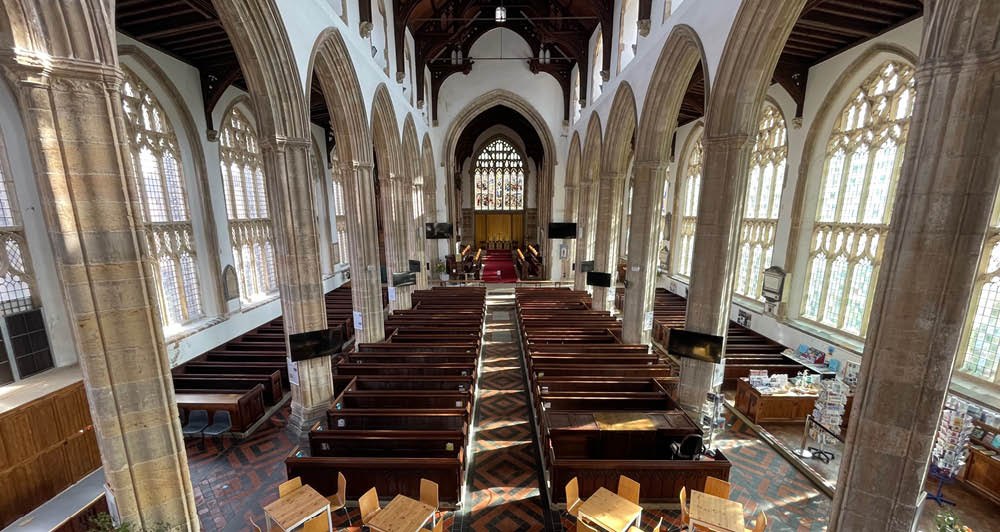The works to the building include the installation of upgraded lighting and a state-of-the-art system to redistribute warm air from the top of the building down to ground level.
Everyone coming along to services and other events in the church will see, and feel, the benefits of these improvements. In addition, this project will make the building more environmentally friendly and cost-effective.
These works will involve installation of extensive scaffolding in the nave and chancel of the church for just under three months from Tuesday 2 January to Friday 22 March 2024.
Due to the complex nature of the project in the Grade 1 listed building, the Parish Church will be closed for the duration and arrangements have been made to hold services in the Parish Hall (opposite Boots) instead, allowing regulars and visitors to continue to meet and worship together.
Destratification fans will be installed at a high level in the church, to move warm air that collects at the top of the building down to ground level.
Ivan Kimble, one of two churchwardens at Cromer Church said: “The destratification system will help keep the building warmer in winter and reduce heating costs. Medieval church buildings have a reputation for being chilly, but we’re looking forward to providing a really warm welcome to regulars and visitors alike in time for Easter next year”
The Carbon Trust estimates that the use of destratification fans in high-ceiling buildings such as churches and warehouses can reduce energy consumption by up to 20%, and CO2 emissions by between 20% and 50%. These represent significant steps towards the Church of England’s net zero environmental targets.
The church’s present lighting system is obsolete, and the replacement lamps and equipment are no longer available. The upgrade, to LED, will improve the quality and sustainability of lighting in the church.
The new lighting will be controlled wirelessly and allows for dimming and different colour effects that can enhance the atmosphere at events held in the church, such as the extremely popular Christingle service held at Christmas each year. In addition, it will save around 37% in energy costs and reduce the need for maintenance to be carried out at a considerable height.
These improvements are the latest in a programme aimed at updating the space inside the church building and making it ‘fit for purpose’ in the 21st century. Most recently in June this year, digital screens were installed on pillars in the main part of the church to improve the visibility of words and pictures displayed.

